There are many different kinds of viruses out there, ranging from the common cold, to influenza and Ebola, Rabies, chickenpox and the novel covid-19 coronavirus.
How viruses spread
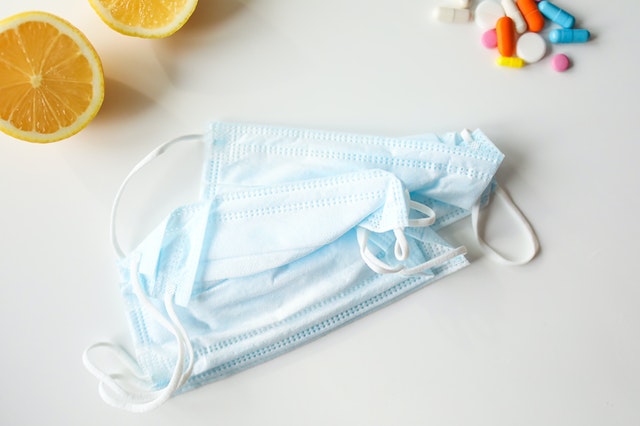
Credit: Pexels
These viruses spread from person to person through a variety of ways. Some are airborne and persist in the air for long periods of time, such as Tuberculosis, Measles and chickenpox. Others spreads through respiratory droplets that are suspended in the air, namely flu-like viruses such as influenza and coronaviruses.
As well, there are also viruses that spread via saliva or faeces, such as Hand Foot Mouth Disease (Enteroviruses), Rotaviruses and diarrhoea-like infections.
Exercise helps to combat against viruses
How then, can a person protect himself against the harmful effects of such viruses, and reduce the chances of becoming critically ill?
Doing regular exercise is a good way to strengthen the immune system to combat against the effects of such viruses, according to Dr. Derek Li, a family physician in private practice.
What is considered as regular exercise? According to the Health Promotion Board, Singapore, that is at least 150 minutes of moderate intensity aerobic exercise per week e.g. walking, yoga, Zumba, or 75 minutes of vigorous aerobic activity e.g. running, HIIT.
Said Dr. Li, “Exercise has been shown to boost our immune system. Moderate intensity exercise has been shown to increase blood circulation of certain white blood cells, which improves our immune defences and reduces our body’s inflammation in the longer term. All these benefits translate to reduced susceptibility towards infections.”
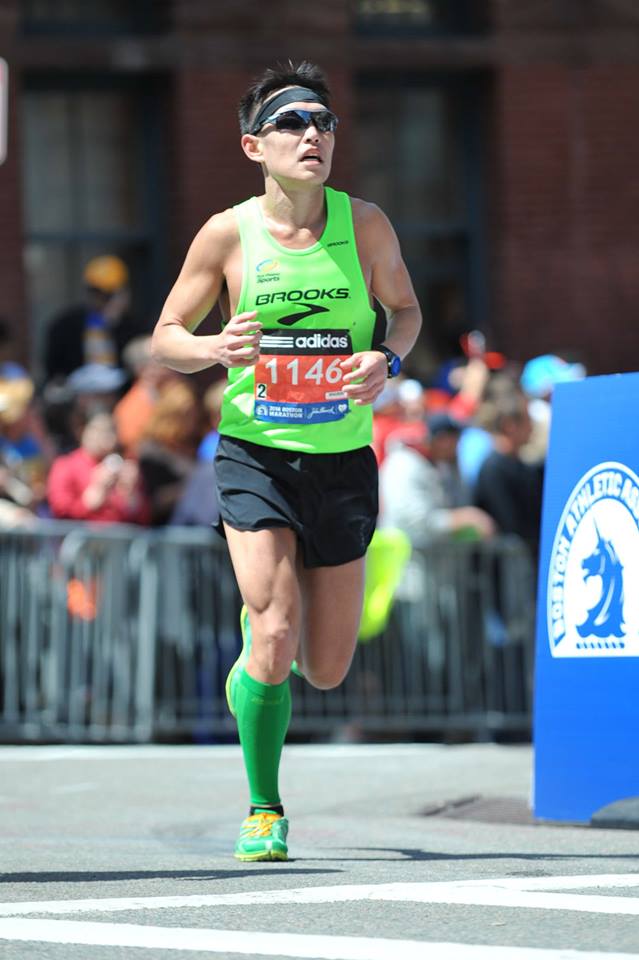
Dr. Derek Li. [Credit: MarathonFoto]
But while running is generally considered to be healthy, Dr. Li cautioned that runners who are experiencing mild flu-like symptoms such as sore throat, should not continue with an outdoor running routine.
He said, “Absolutely not, in the current climate, unless they can do it in an environment where there is no contact with others, such as a personal treadmill.”
That said though, if you are having above-the-neck symptoms such as sore throat, nasal congestion, sneezing and tearing eyes, the doctor feels that is fine to continue with your exercise regime, but only providing you are doing it in isolation, due to the current climate.
But if you have below-the-neck symptoms such as body aches, fever, and fatigue, then do not run or do any form of exercise unless these symptoms subside as it may be dangerous to do so.
Running and the rate of virus infection
Depending on the virus, Dr. Li also noted that some people may be carriers of some viruses; that is, they are showing no symptoms of a virus, but they may still be infectious. If this segment of people went out for a run, would they be able to possibly infect passers-by along the way?
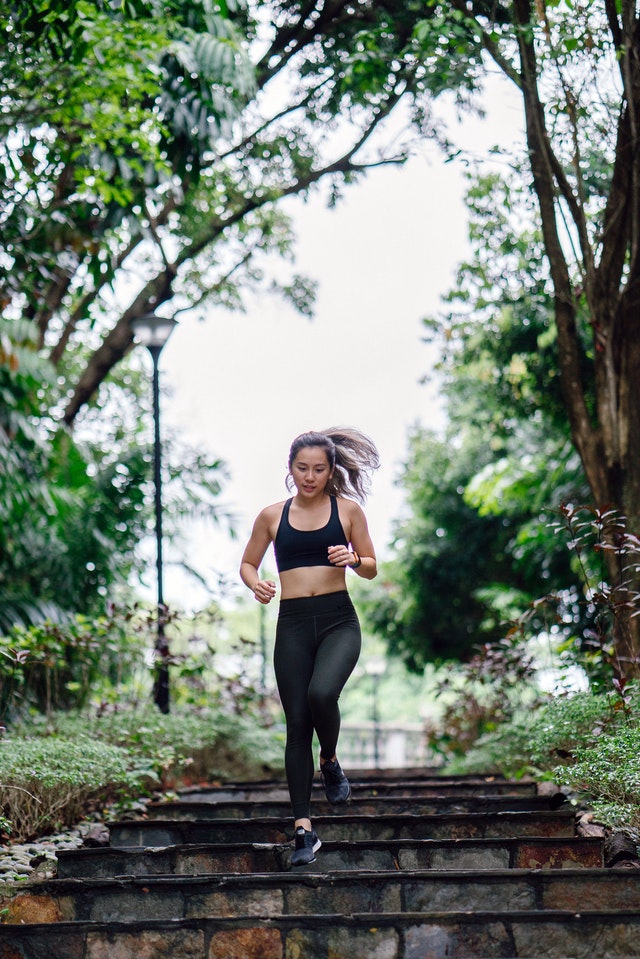
Credit: Pexels
Said Dr. Li, “This is hard to say; it depends on the virus. When we measure infectivity, we look at a number called R0 which tells on on average, the number of sick persons one sick person will generate. The bigger the R0, the easier it is for the virus to spread.”
Some of the more common viruses today, according to Dr. Li, have an R0 as follows:
- For Measles, it is 12-18.
- For Chickenpox, it is 10-12.
For SARS, it is ~3 - For Covid-19, it is 2.5-4.
He added, “Of course, R0 does not paint the full picture though. It depends on how long the virus can incubate, the presence of pre-symptomatic and asymptomatic spread, and the degree of herd immunity in the community.”
Continued Dr. Li, “With that in mind, it is almost impossible to get sick just from breathing in one breath of virus-laden air from a runner who passes you. You would need more, probably multiple breaths, in an enclosed environment, to fall sick.”
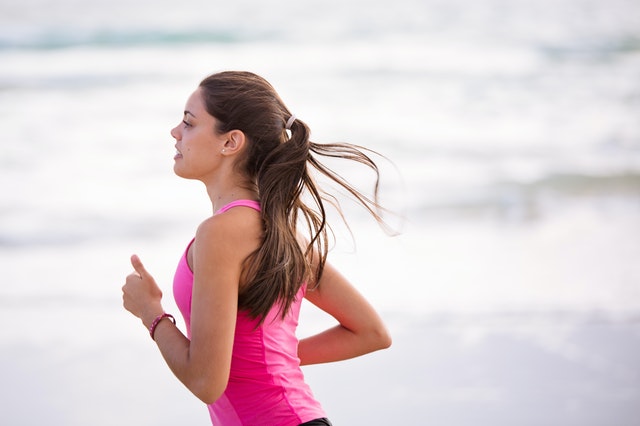
Credit: Pexels
So then, this is why Dr. Li is of the opinion that runners do not need to wear masks when they go running (only if safe distancing is observed), as the risks of them spreading any virus around is low, even if they may be asymptomatic carriers of a virus.
Running versus walking
Is there a difference between running and walking then, in terms of an asymptomatic person spreading respiratory viruses around?
Said Dr. Li, “Let’s just focus on respiratory viruses that are spread by droplets for now. An airborne virus can infect anyone in a 3-block radius. Respiratory droplets are spread from the nose and throat, not from your skin, and we now know droplets can be dispersed from talking, singing, coughing, sneezing. Breathing, however, is a grey area.”
Comparing walking and running against each other, Dr. Li looks at the number of breaths taken over a certain distance. He said, “Clearly with walking, you are breathing slower, but also moving slower.”
For example, to cite a generic person walking 4km/h (3.3metre/sec), he may be breathing maybe 20-24 breaths/min or 0.36 breath/sec, which works out to be 1 breath every 3 metres.
For the same generic person, if he is running 12km/h (3.3metre/sec), breathing 30 breaths/min, which works out to be 0.5 breath/sec, working out to be 1 breath every 6 metres.
Said Dr. Li “Everyone has different fitness levels, so the numbers are different for everyone, but one infected breath every 3 – 6 metres does not seem like much unless the runners do not practise safe distancing and all crowd the path.”
So, again, Dr. Li gathers that the risk of an asymptomatic carrier infecting others along the way during his walk or run, is low. So he adds that it is ok to run without a mask ONLY IF SAFE DISTANCING IS OBSERVED.
Wearing masks, exercising and breathing
As well, Dr. Li also shared more on the topic of running while wearing masks, and why donning masks make it so hard to breathe during physical activity.
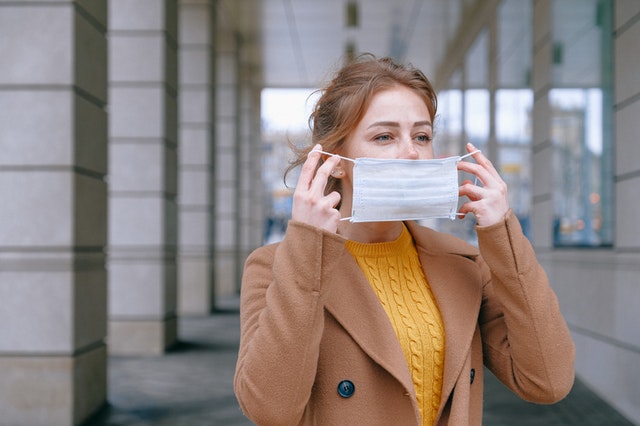
Photo by Anna Shvets from Pexels
He said “Masks work by providing a physical filter for small particles. The more effective the mask, the more effort it takes to breathe through. Even when you are sitting down, the effort to breathe is harder. It is just that this effort is magnified when you are needing to breathe hard during exercise.”
As such, wearing a mask to exercise makes the rate of exertion significantly more strenuous and this may possibly lead to heart attack, even in a healthy runner.
Not all masks are effective
Dr. Li also added that the effectiveness of masks are limited, too, depending on the type of masks.
He said “It depends on the mask and the virus. The better the barrier, the lower the risk. Different viruses have different size.”
According to the doctor:
- Foam masks block out nothing and have no use at all.
- Cloth masks block 40 to 50 per cent of particles
- 3-ply surgical masks block about 70 to 95 per cent.
- N95 masks are the most effective as they block out 95% of particles, as the name suggests.
Added Dr. Li, “Oh, a mask becomes useless once it gets wet. Face shields may be more effective but we haven’t really studied those yet.”

well written and informative article. The calculation on the speed when running is informative esp when we are outdoor running!